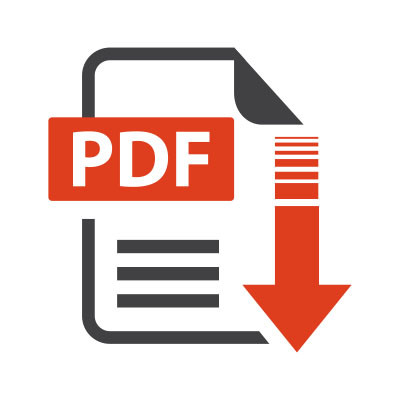PDF, which stands for Portable Document Format, is a type of file that business professionals are all too familiar with. While most are aware of and appreciative of this file type, they likely are not aware of some of the more fun and useful features afforded to them. Let’s explore just what PDFs are capable of, including how to make and edit them.
Apex Technology Blog
Templates are a handy feature that popular word processing platforms, like Google Docs, offer to help users create specific types of documents. While there are plenty of prebuilt templates available, there’s always the possibility that you have a need that isn’t filled by one of them.
In these cases, you always have the option to build your own. Let’s go over how, and discuss some of the elements and options that your custom Google Docs templates can support.
Do you remember a couple of years back when remote work went from being a privilege to the norm? It’s been a while since then, but many businesses have adopted hybrid or full remote operations, and as such, they are able to retain a semblance of normalcy even without the return of in-office work.
Some businesses have managed to get back to the state they were in prior to the pandemic, but there is a reason why a lot of businesses are not pushing the issue. Let’s go over some of them, and why forcing the issue with your employees is not necessarily a good idea.
Remote work offers numerous benefits for both your employees and your business, provided you can overcome the challenges associated with implementing it. One such challenge is productivity, something which employees might struggle with while working remotely. Here are four ways your average remote employee might be challenged by their remote work in terms of productivity.
Downtime in a business context can be considered a "business predator" because it can have detrimental effects on a company's operations, profitability, and overall success. Downtime refers to the period during which a business' critical systems, processes, or equipment are not functioning as intended. Here are some reasons why downtime is often seen as a threat to businesses.
Financial Impact
Downtime can result in significant financial losses. When key revenue-generating systems or production processes are unavailable, businesses may lose sales, incur extra expenses, or face penalties for failing to meet contractual obligations. Downtime can also prevent a business from pursuing new opportunities or responding to market changes. In a rapidly evolving market, missing out on opportunities can have long-term consequences, and can be the difference between business growth and stagnation.
Operational Impact
Downtime leads to decreased productivity as employees cannot perform their tasks efficiently. This results in wasted time, missed deadlines, and a drop in overall output. In cases where downtime is due to data loss or system failures, it can result in the loss of critical information, which can be difficult or impossible to recover. This can have severe consequences for businesses, especially when it comes to sensitive or irreplaceable data. Frequent downtime can demoralize employees who must deal with the frustration and stress of interrupted work. Low morale can lead to higher turnover rates and decreased employee engagement.
Customer Impact
Prolonged or frequent downtime can do significant damage to a company's reputation. Customers and partners may perceive the business as unreliable, which can be challenging to overcome. Also, these unfortunate companies may find it challenging to compete effectively in markets with companies that show better reliability.
If you struggle with downtime, you can do better. If you don’t, you need to ensure that continues. The IT professionals at Apex Technology can help. We can introduce you to technologies and strategies that are designed specifically to reduce downtime and improve operational efficiency. Get a professional perspective by calling (704) 895-0010 today.
Your business’ backup and disaster recovery preparations are a critical part of your continued success as an organization, specifically, how they are measured by two key metrics: your recovery time objective (RTO) and your recovery point objective (RPO).
However, it’s important that you are able to determine what your organization can support in terms of your recovery time and recovery point objectives… but how does one do that?
Artificial intelligence, or AI, is a bit controversial at the moment, but there can be no denying that it will play an important part in the business world in the years to come. In fact, many organizations are seeking to expand their AI offerings and capabilities, including notable companies like Microsoft. Here are some of the solutions Microsoft is offering businesses in terms of AI.
Chances are, your and your employees’ lives are fully permeated with technology, from the very start of the day to the moment you close your eyes to sleep in the evening. That’s just how the world works nowadays, but there is evidence that this permeation of tech can have some adverse effects on us all. That’s why, as odd as it may sound coming from an IT provider, you may want to occasionally take a moment to step away from technology.
How does your business handle communication? Does it struggle to properly use its technology and collaboration tools? If so, we have some tips that can help you avoid the most common collaboration mistakes, particularly those related to data security. Read on to learn how you can ensure you’re not putting your data at risk needlessly with inappropriate collaboration security mistakes.
When you consider your business’ investments, you probably think about things like the hardware your team uses and the software this hardware supports. You might think about the furniture you’ve purchased to outfit your office. However, one often overlooked—but incredibly important—element that needs some level of investment is your employee satisfaction.
As the boss, you’re in a position to offload many of your business’ responsibilities to your employees. That’s more or less why you have employees in the first place. However, there’s more than one way that you can delegate tasks, depending on your personal style of management and the work style of each of your employees.
We’ve been examining the concept and phenomenon known as procrastination in recent weeks, touching on why we do it and how it often manifests itself in business processes. For our final few parts, we’ll be focusing on how you can stop procrastinating by utilizing both quicker, short-term tactics and long-term, sustained changes. Let’s start with some short-term tactics.
We recently started to pick apart the concept of procrastination as a means of understanding it better, and potentially, getting better at not doing it. Last time, we touched on a few ways that procrastination can potentially manifest, so it only made sense to us that we would continue pulling that thread and try to help you identify how you tend to procrastinate more specifically.
“Never put off until tomorrow what you can do today.” It’s timeless advice, as well as some of the easiest and most tempting advice to ignore. Procrastination is one of those things that we all assume we understand, but we wanted to take a bit of time to explore it in greater detail…and figure out how we can all work to resist it.
We tend to focus most of our attention on how to maintain your business’ technology over time. This only makes sense—we are a managed service provider, after all—but that being said, your IT is not the only element that needs to be properly taken care of. It is just as important that you and your team members are physically able to focus on work…something a desk job doesn’t always help.






























